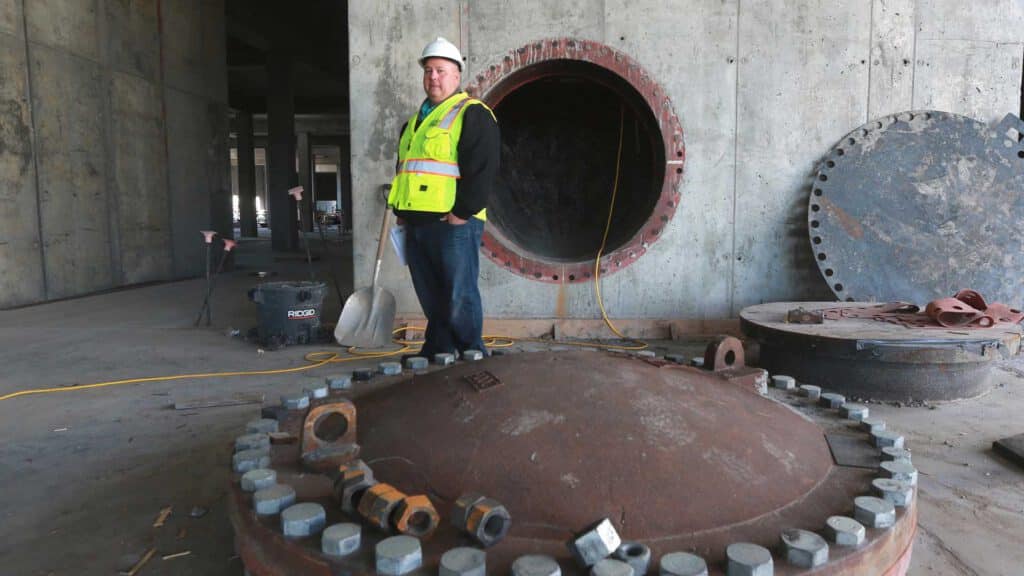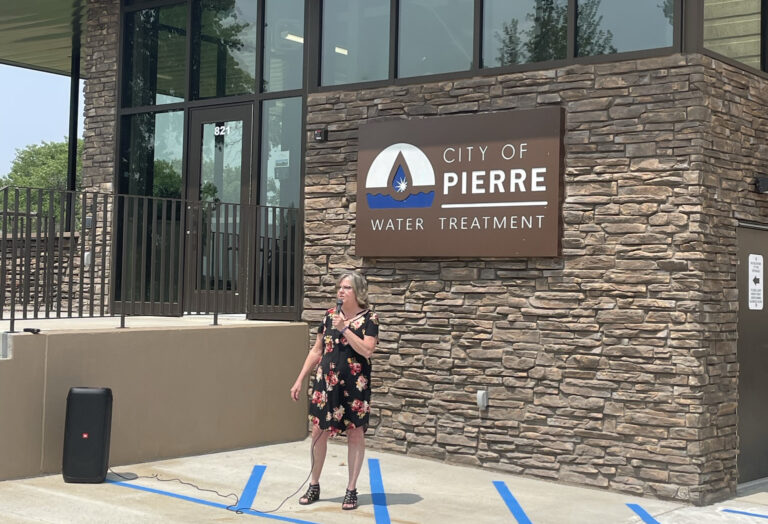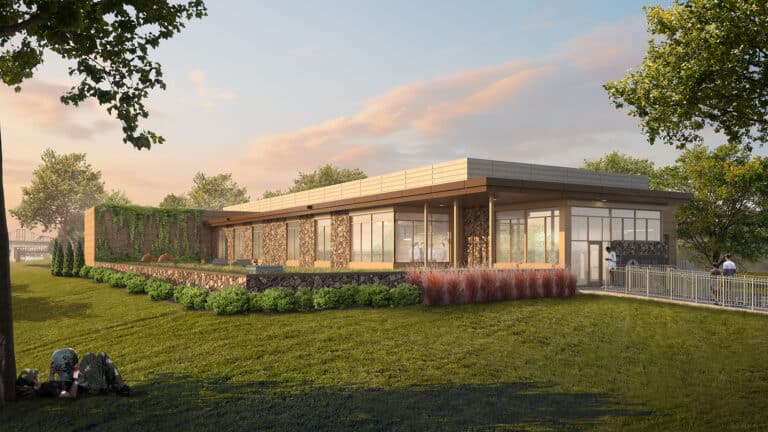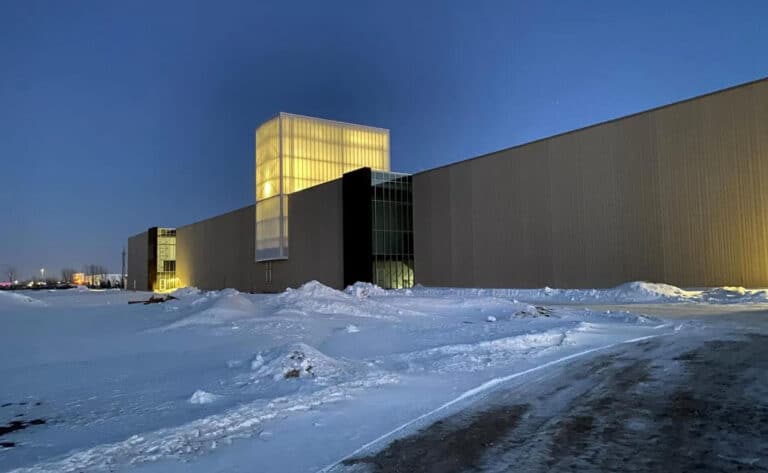As temperatures get lower, construction workers are pouring concrete even higher on a new three-story water treatment facility for the city of Grand Forks.
The nearly $150 million plant will have the capacity to treat 20 million gallons of water every day, 3 ½ million gallons more than the downtown plant can treat. The new facility also will eliminate more water contaminants than the old plant.
“We’ve received $65 million from the state to date,” said City Administrator Todd Feland, adding the city has paid $65 million itself, using sales tax collections and water rates residents pay.
By November, construction staff have to install garage doors, an elevator and finish pouring a total 22,000 cubic yards of concrete, but water plant supervisor Fred Goetz said they’ve come so far since breaking ground two years ago that he’s confident they’ll make their deadline.
The plant won’t be operational until 2020, yet Goetz had no problem Thursday pointing out the route water will take from the raw intake center downtown to the 7 million gallon clearwell at the new site, where the city will keep its treated water.
“Everything goes through pretreatment, and then from pretreatment the water can either go through conventional or it can go through ultrafiltration or both,” Goetz said.
The plant downtown only treats water through a conventional process in which water is softened by limestone and disinfected using ozone, he said.
“But they can be treated through ultrafiltration,” Goetz said, which the new plant will do.
The city draws most of its water from the Red River, but it has detected a contaminant called sulfate in its source originating from Devils Lake.
“The sulfates are basically a salt, and in high concentrations it causes intestinal upset until you can get used to the water,” Goetz said.
Because the existing facility can’t remove sulfates, the city has been drawing 95 percent of its water from the Red Lake for now, he said.
“And we’re just supplementing with 5 percent from the Red River,” Goetz added. “To minimize the sulfate.”
Operators and plant administrators will spend a majority of their time on the top floor, where there will be offices, labs and control rooms, Goetz said. The treatment processes and the basement, where the facility will pump its water, will be below them.
Administrators will watch operations on the main floor through a window upstairs, in what Goetz called the “heart of the plant.”
“Treatment is very visual,” he added.
Otherwise, there won’t be many windows in the new facility.
Making plans for the old plant
Once the new plant is fully operational by July 2020, the city will have to do something with the old plant downtown.
“Ultimately, what we think we’d like to do is request proposals to redevelop the site,” Feland said. “And probably have some criteria, like, ‘What kind of uses would we like to see out of that property?'”
Feland predicted the city likely will sell the location to a private organization, with some requirements based on community and market needs.
“Certainly, there’s going to be a lot of community feedback in that because there’s a neighborhood right there,” Feland said.
The current site also is a historically important location to the city.
“The city sees that as one of the prime locations in the city of Grand Forks because it’s at the intersection of the two rivers, the ‘grand forks,'” Feland said. “When you think about it, the water plant’s been at that site the last hundred years. We want to make sure whatever we develop really works effectively over the next hundred years.”





